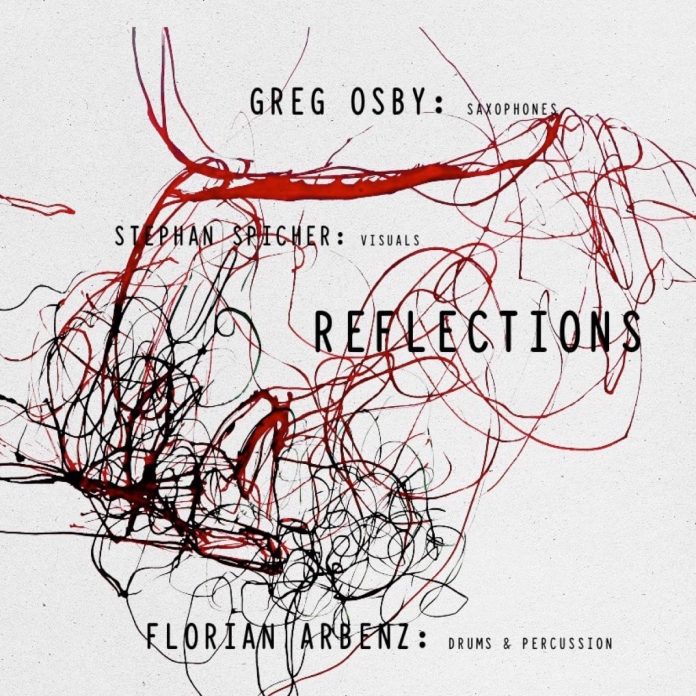Drummer Florian Arbenz first heard American saxophonist Greg Osby on a Swiss radio jazz show back in 1991, which immediately inspired him to play “Osby’s sort of music”. In 1998, along with his pianist brother Michael, he finally plucked up the courage to ask Osby to collaborate with them both on what became a two-week tour. A common sense of humour bound them together, but it is only now that Osby and Arbenz have actually recorded together. The third person here is the painter Stephan Spicher, whose main themes in his paintings are line and nature. A recent work on the theme of the interaction of a red and a black line – which adorns the cover – forms the basis of this set, which was actually recorded in his workshop.
At first glance, a saxophone–drum duo may seem sparse. But the two musicians contribute a huge range of improvisational ideas and techniques, not to mention a combined experience of more than 60 years, to create a wide and varied palette of sounds.
Osby, on soprano and alto, shows his seemingly endless stream of inspiration whilst Florian expands the classic jazz drum kit with a huge Balinese gong, some tuned kalimbas and other custom-designed percussion instruments that add a sense of bass lines and even harmony.
As Arbenz explains, “the concept of this programme is not just an exchange of ideas, but trying to find a different ‘sound’ for every tune. Hopefully this makes the music diversified to the listener too; it should feel like walking through an exhibition and looking at different paintings”. Most importantly, “we search for a communication and interaction of our two lines, leaving the freedom to each other, but also clearly inspiring each other”.
That inspiration is clear on each track, notably on the spiritual Chant, where Arbenz’s gong and tuned percussion provoke some of Osby’s most haunting lines. Osby is similarly affecting on Homenaje, where his folkish lines are set against a chattering percussive backdrop. The opening Wooden Lines is more agitated, while both Truth and Groove Conductor find Osby in almost a playful Ornette Coleman style as Arbenz adopts the role of an in-form Ed Blackwell. Most enchanting is The Passage Of Light, Osby’s rich soprano floating along on Arbenz’s dextrous kalimba. But as Arbenz said, these are indeed all different paintings, and their joint artistry a sheer delight from start to finish.
Discography
Wooden Lines; Chant; Truth; Homenaje; Groove Conductor; The Passage of Light; Please Stand By (43.52)
Osby (ss, as); Arbenz (d, gong, kalimba, pc). Switzerland? 2020?
Hammer Records















